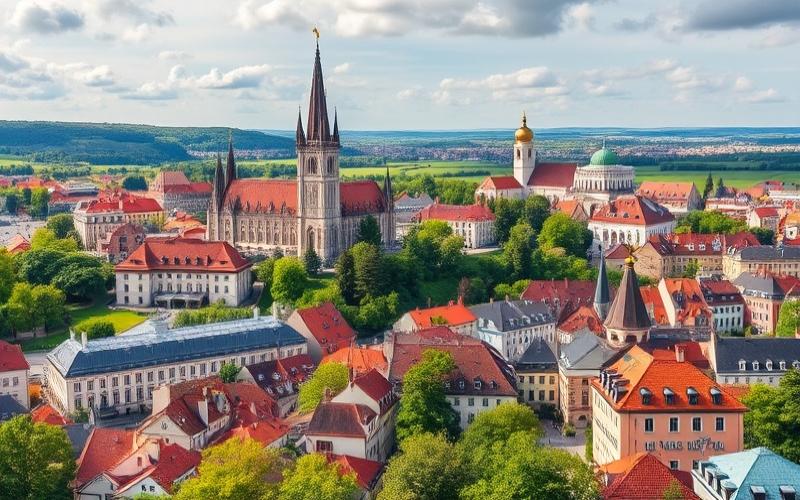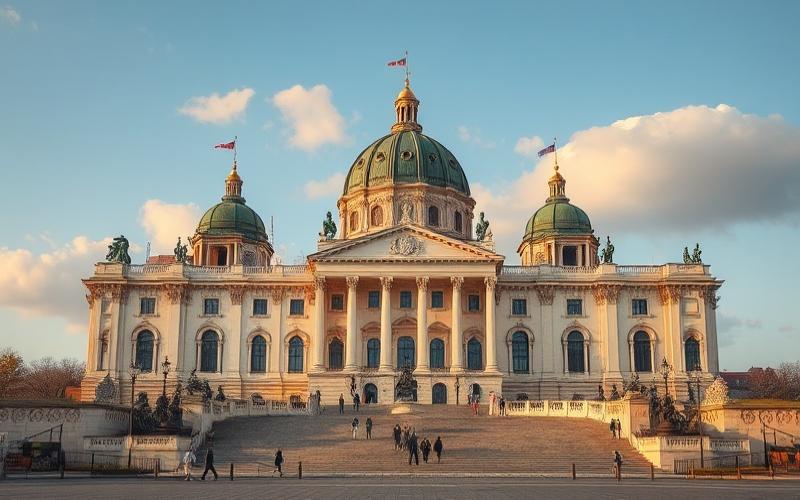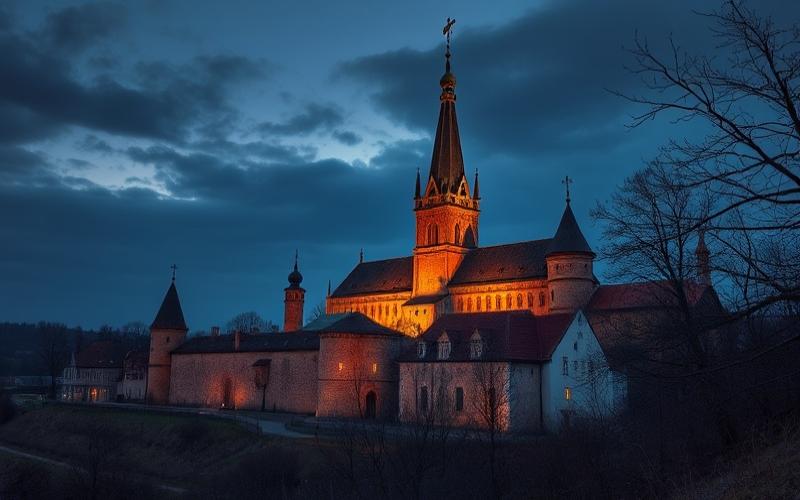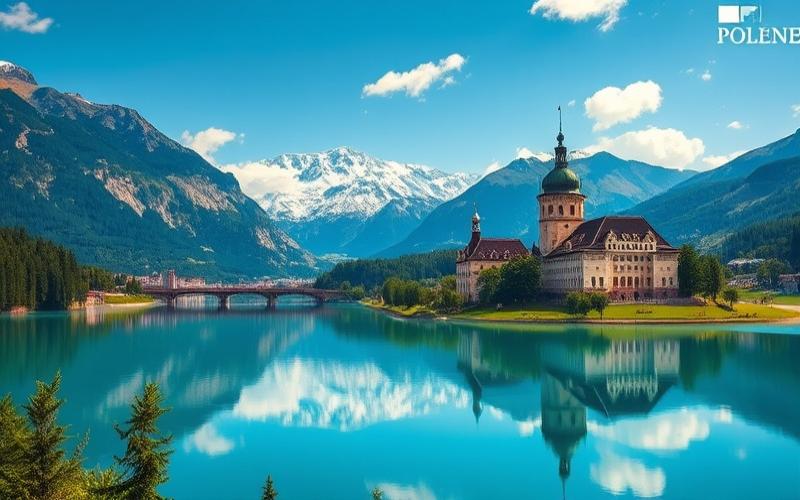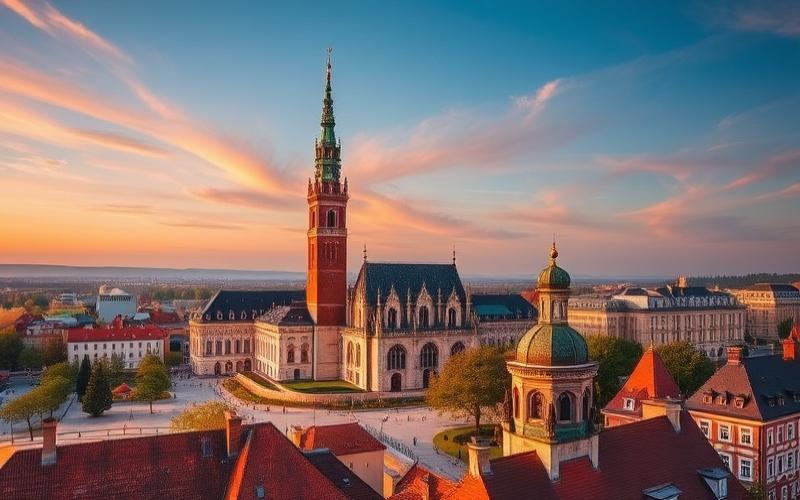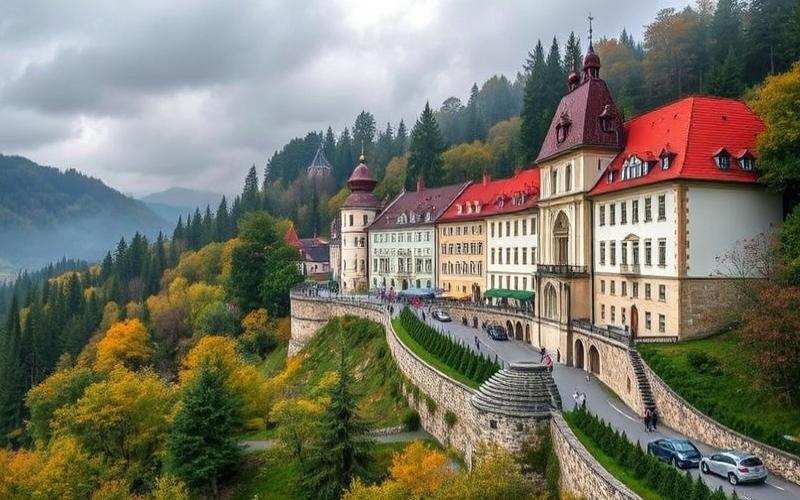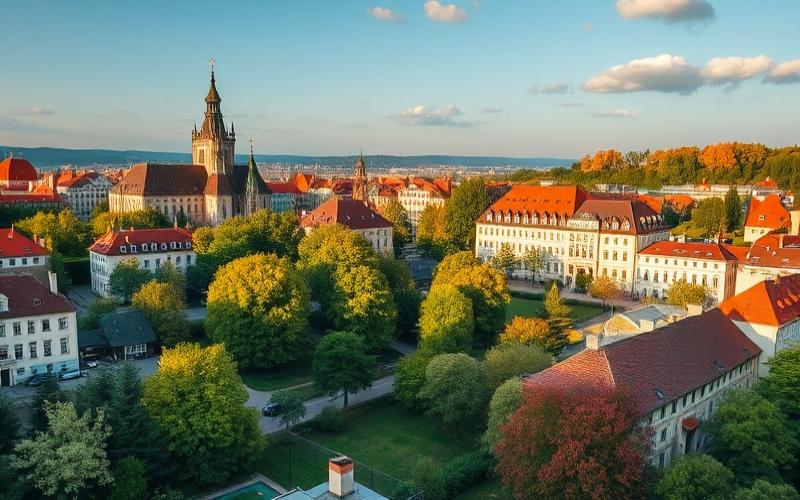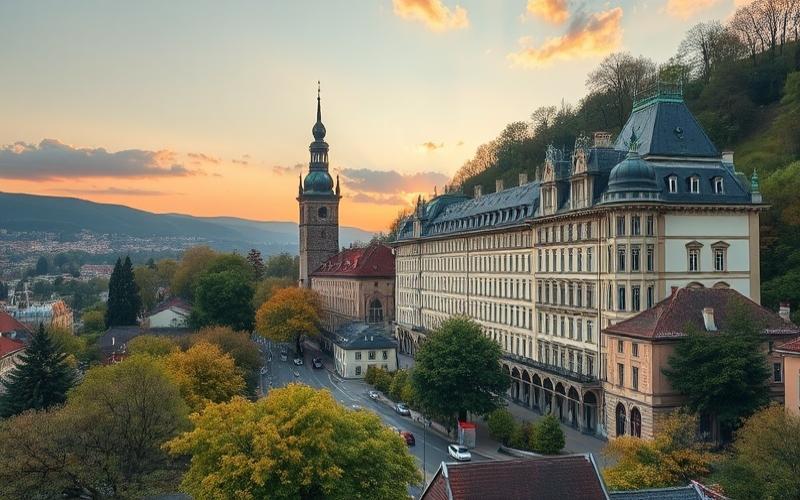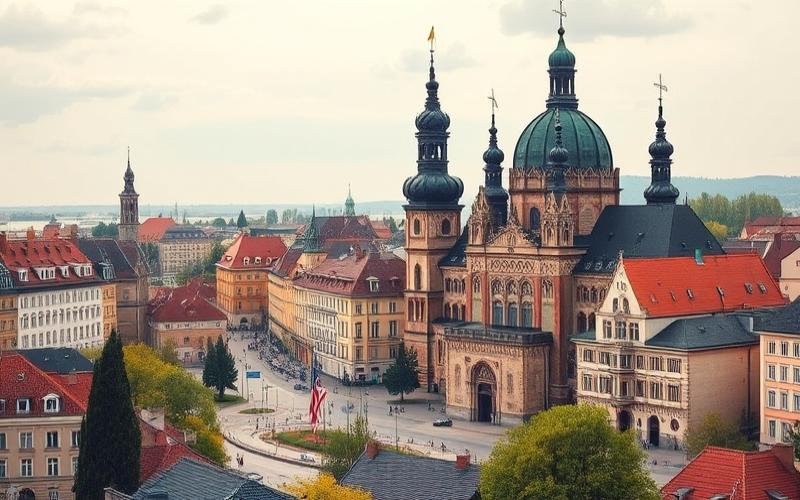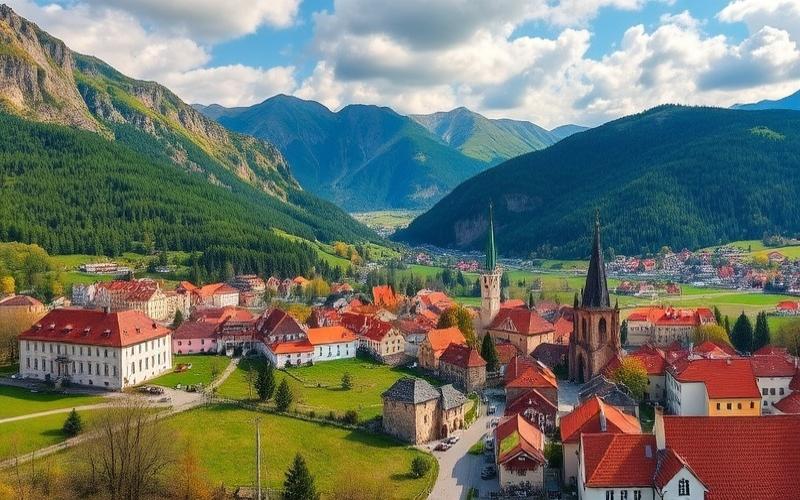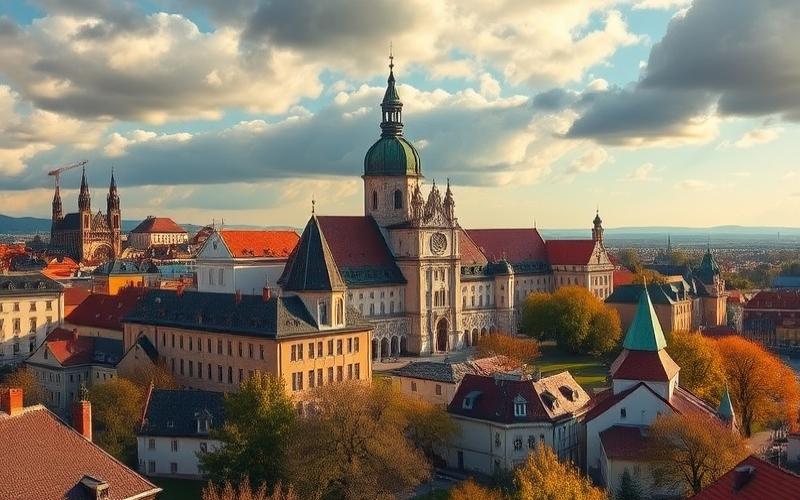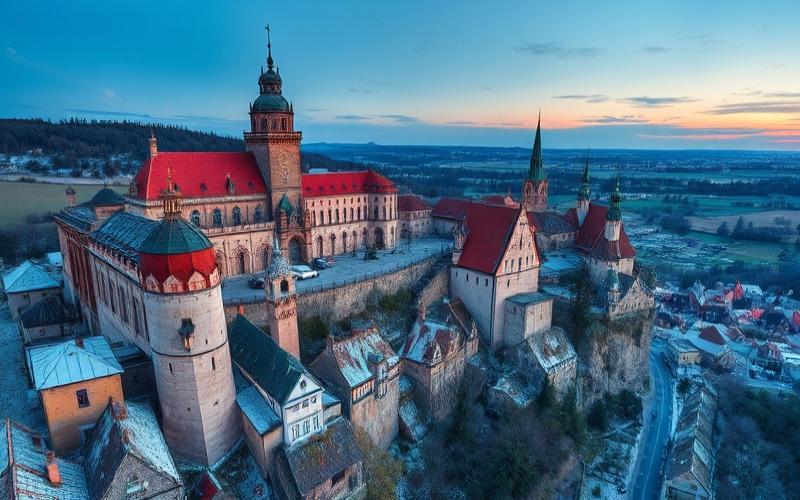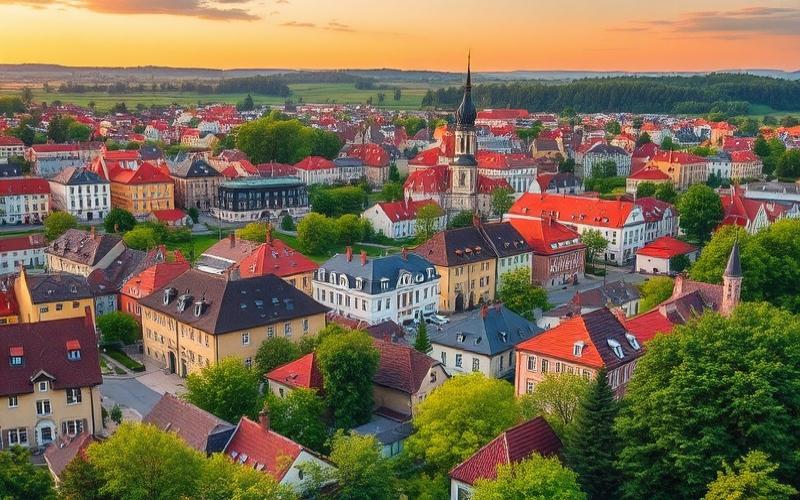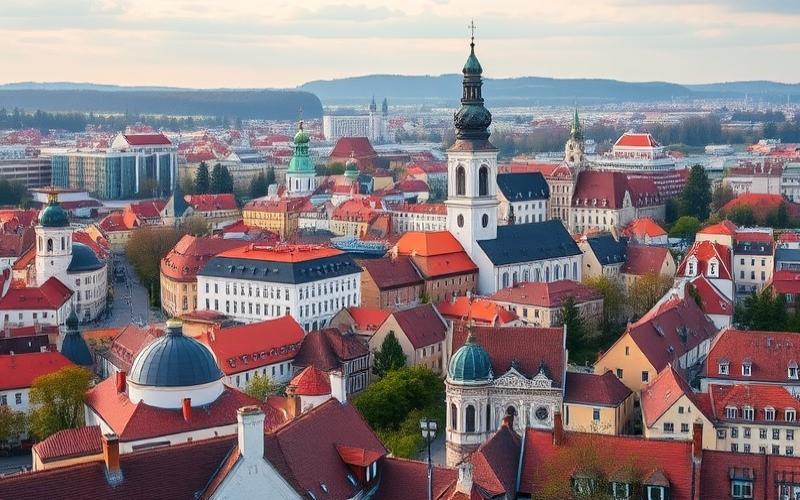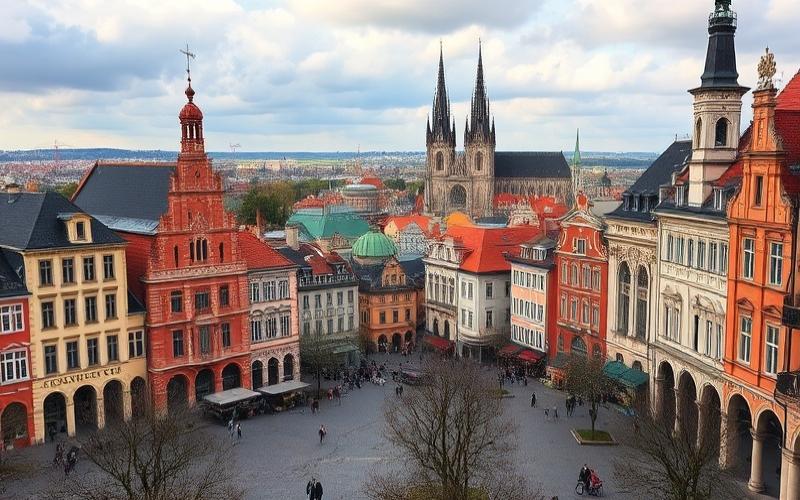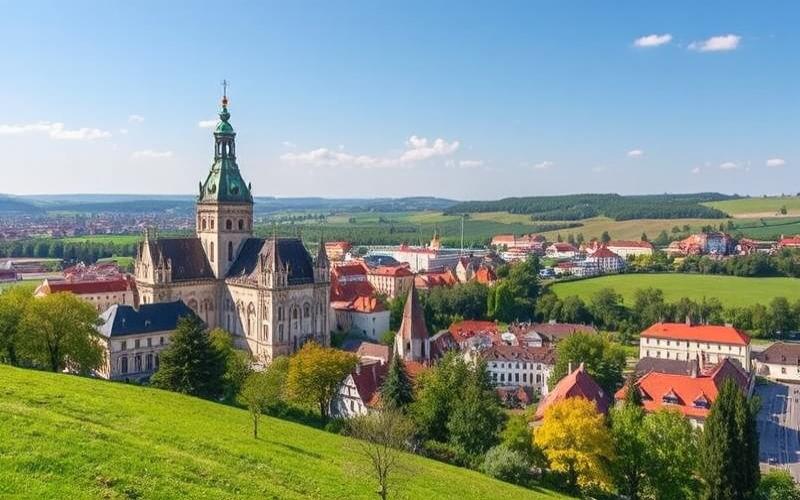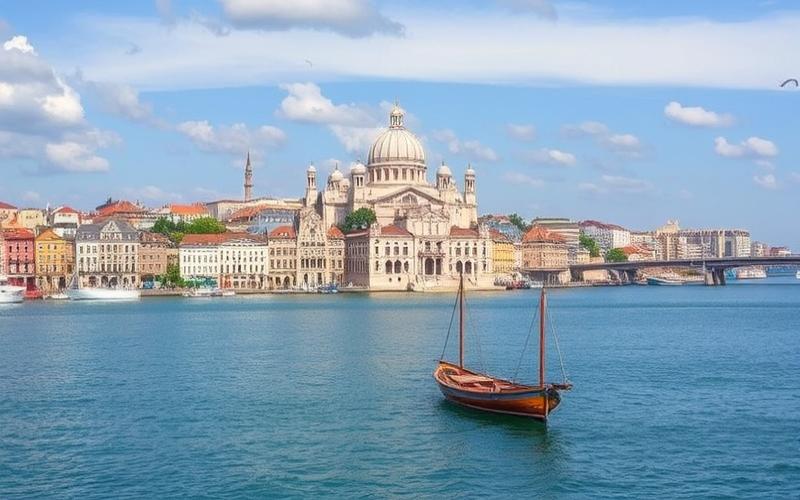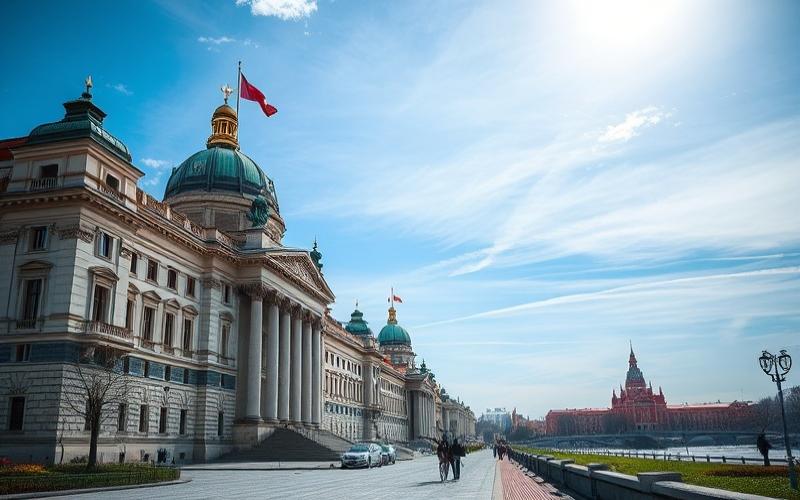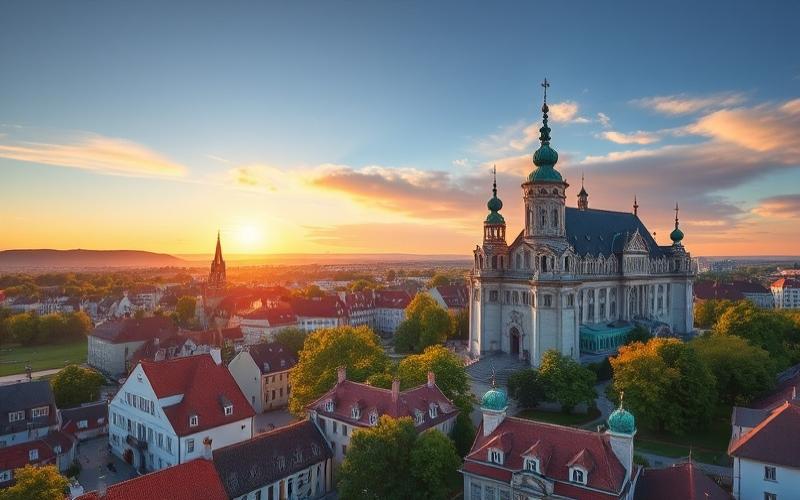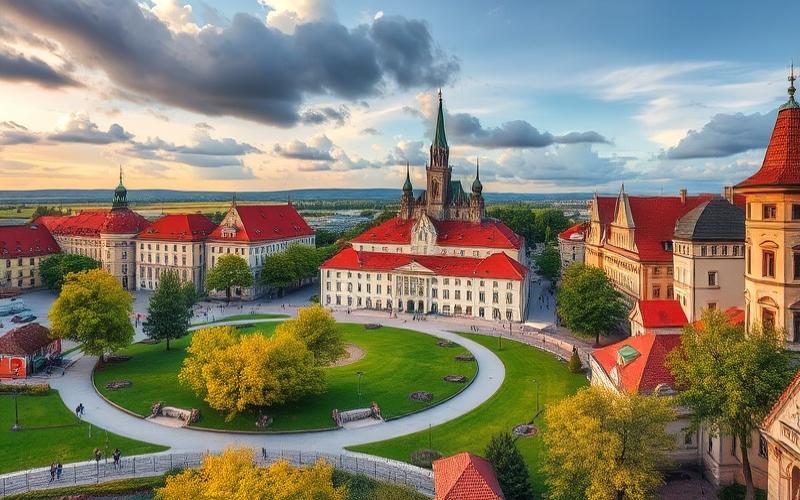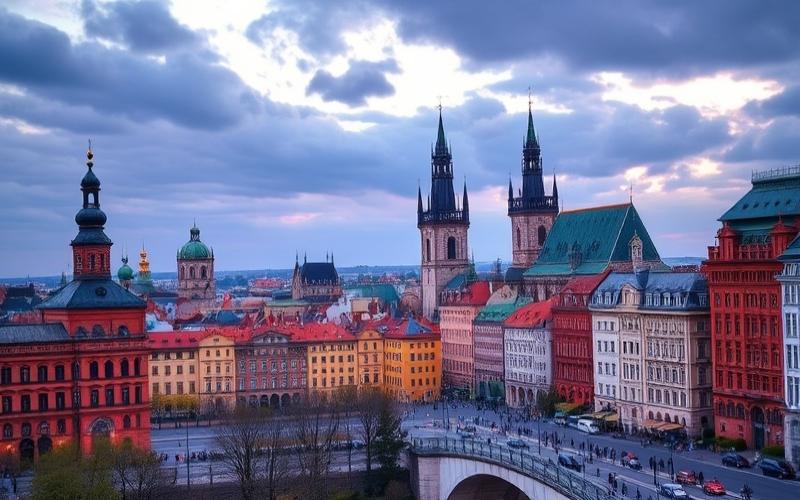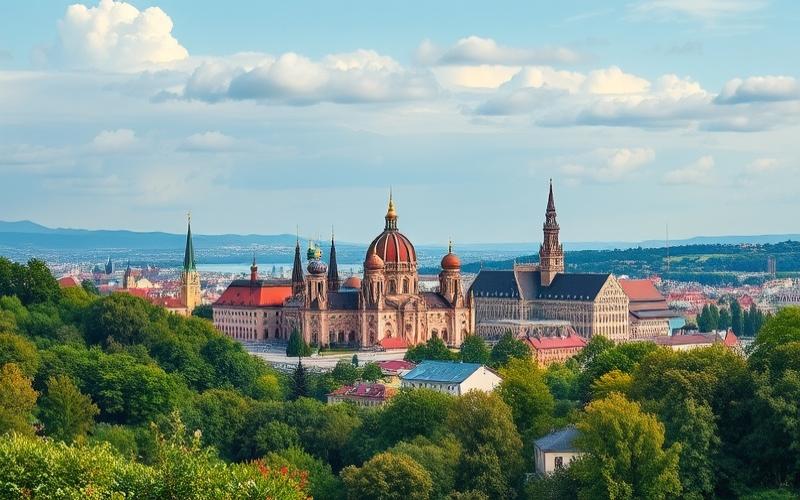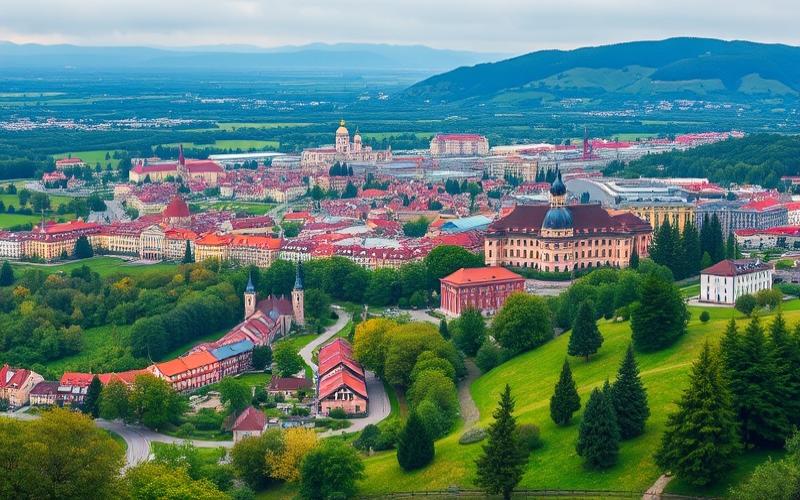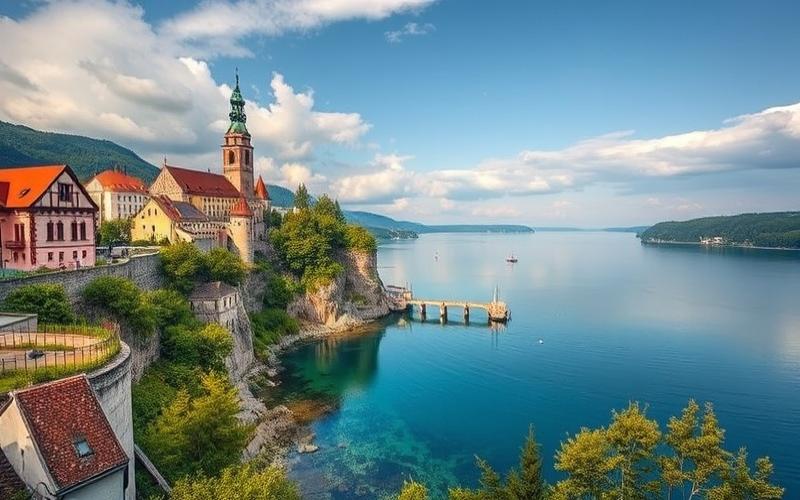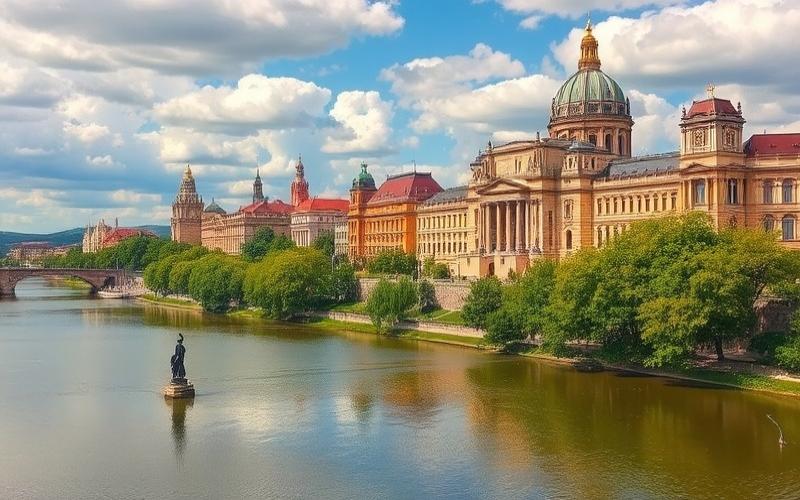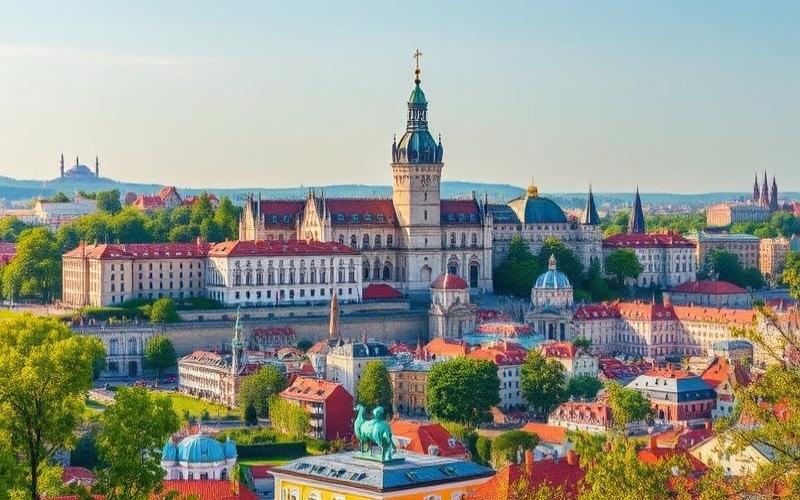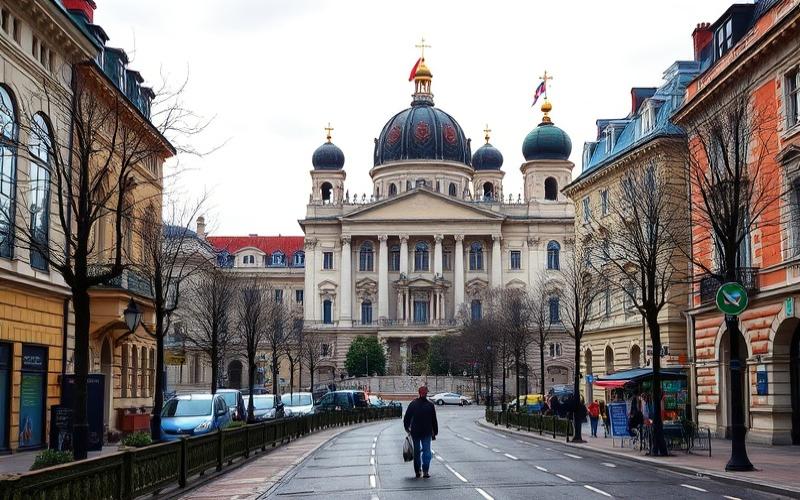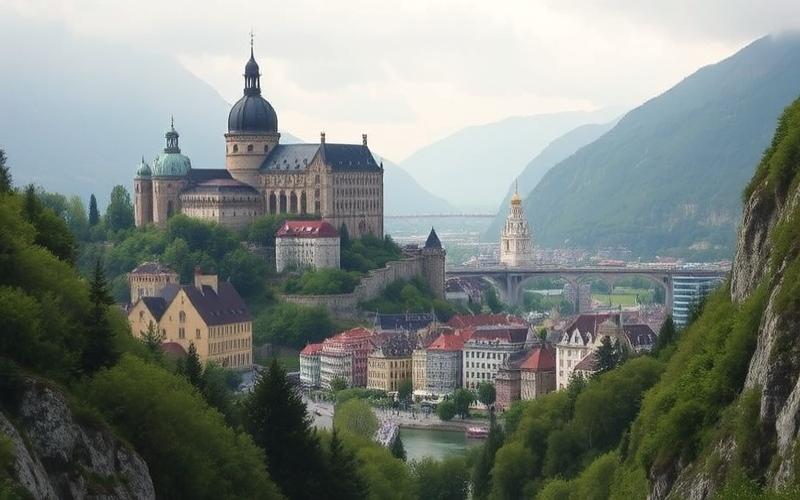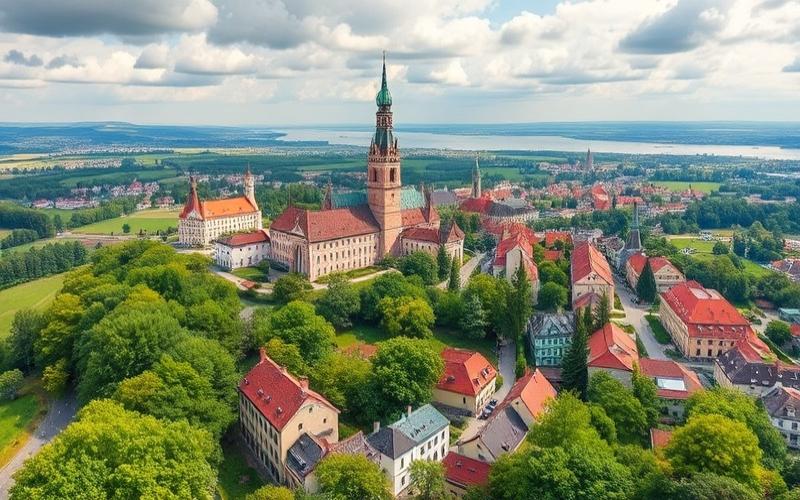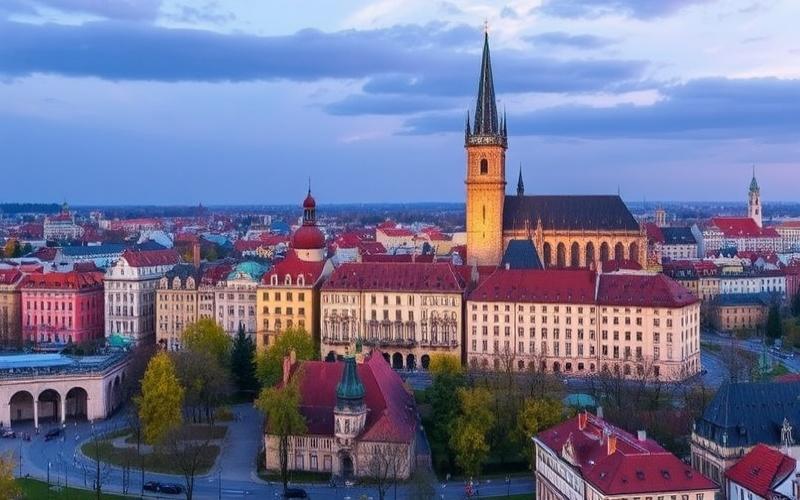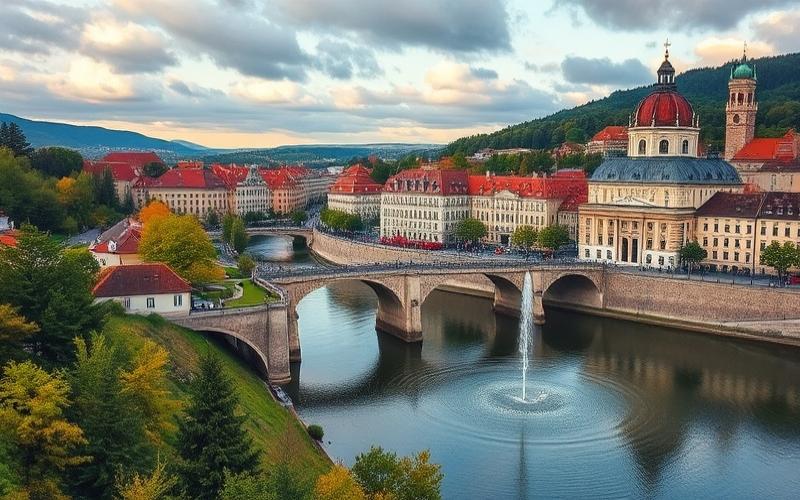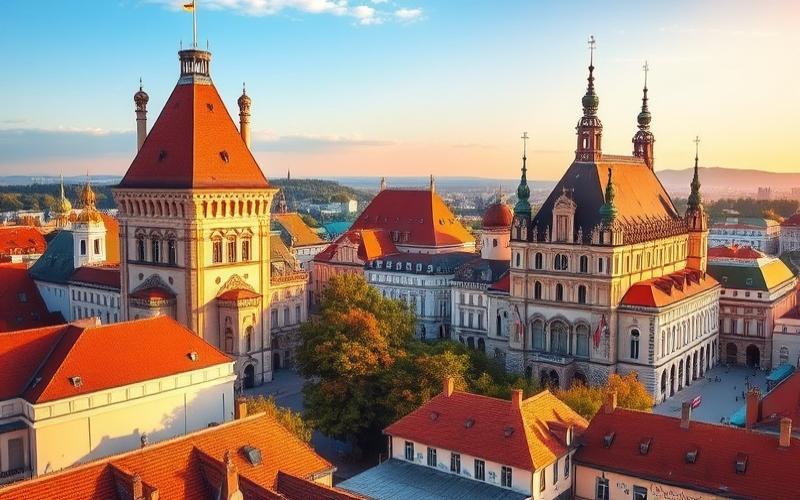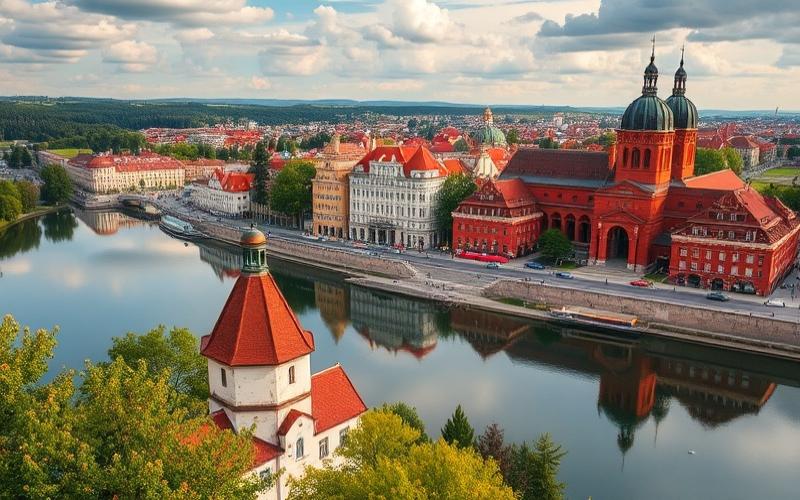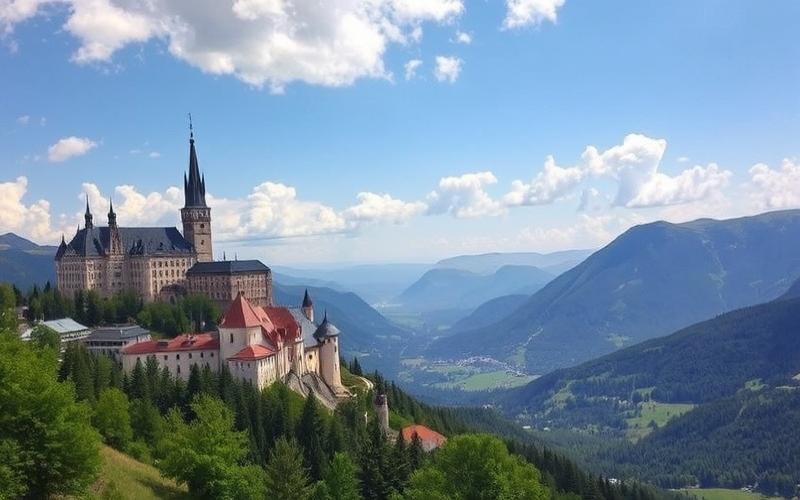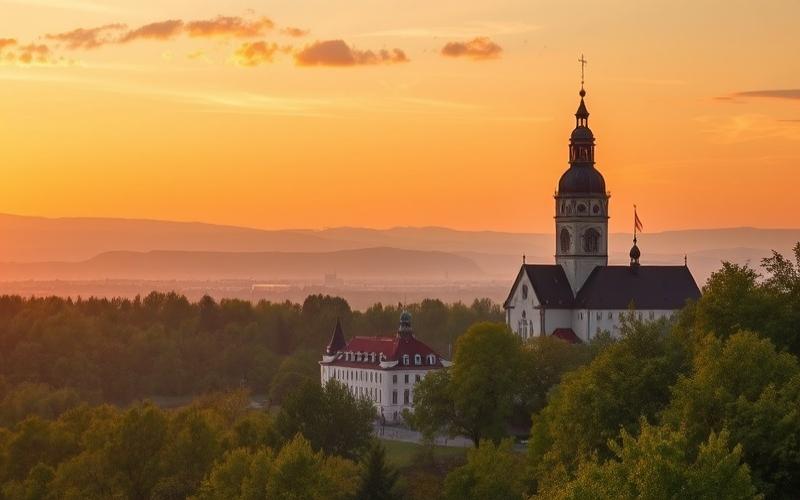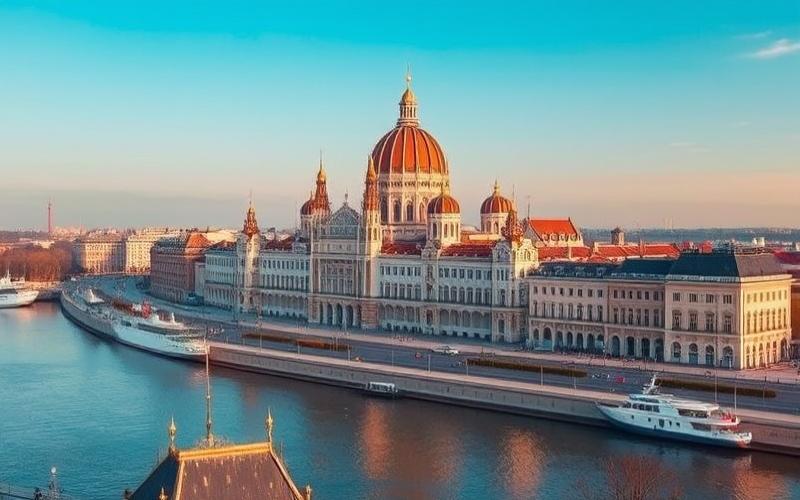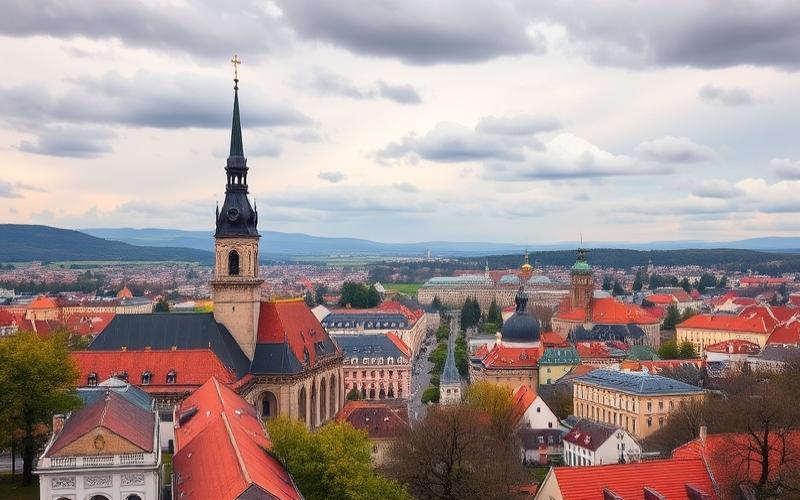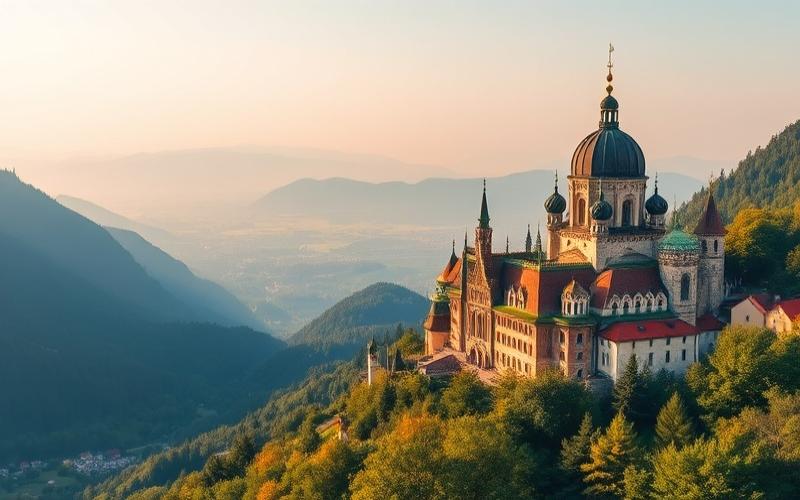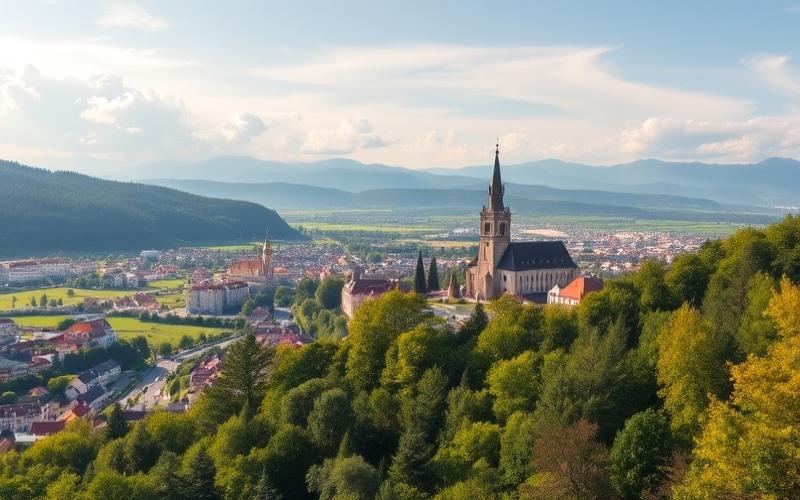
 Published on and written by Cyril Jarnias
Published on and written by Cyril Jarnias
Buying a Hotel in Poland: A Promising Investment Opportunity
Purchasing a hotel in Poland represents a tremendous opportunity, both for seasoned investors and those eager to embark on an exciting entrepreneurial adventure.
With its captivating landscapes and rich culture, Poland is attracting more and more tourists, making it a favorable market for hotel development.
However, success in this sector relies on solid preparation. This article provides a comprehensive checklist, highlighting the crucial steps to follow, from administrative procedures to best practices for optimizing your investment’s profitability.
Follow this practical guide and discover how to successfully navigate the fascinating and demanding world of the Polish hospitality industry.
Good to Know:
The hotel sector in Poland has experienced steady growth for several years, driven by an increase in international and domestic tourism.
Overview of the Hospitality Market in Poland
Analysis of the hotel market in Poland reveals sustained growth, marked by a rapid recovery post-pandemic and significant investments in key tourist regions.
Key Trends and Evolution of the Hotel Supply
| Year | Number of Hotels | Number of Rooms (approx.) | Annual Variation |
| 2019 | ~2,700 | – | – |
| 2020 | ~2,563 | -5,400 rooms | ↓ |
| 2023 | 2,581 | – | ↑ |
- The market was heavily impacted in 2020 with the temporary closure of establishments and a decrease of nearly 5,400 rooms.
- Despite the impacts related to Covid-19, tourist demand quickly rebounded: more than 36 million tourists used accommodations in Poland in 2023, a level exceeding pre-pandemic figures.
- International hotel chains, notably Accor (91 hotels), dominate the sector.
Key Regions for Hotel Development
List of high-potential areas:
- Warsaw: Over 26 new hotels planned, representing a +33% increase in supply (approximately +5,473 rooms). The capital concentrates the majority of upscale and business development.
- Krakow: Still very attractive due to its cultural heritage; strong presence of mid-range and upscale establishments.
- Tri-City (Gdansk-Gdynia-Sopot): Over 16 new hotels expected, representing a leap of +32% of the current supply (+2,336 rooms).
- Other dynamic hubs: Wroclaw, Poznan, as well as major seaside or spa resorts.
Recent Economic and Political Impact
- Persistent inflation increases operational costs (wages, energy).
- The war in Ukraine generated a temporary but significant influx of additional international clientele — without slowing down classic tourism.
- Remarkable resilience in the face of recent economic crises.
Current Demand by Hotel Type & Customer Segment
| Segment | Estimated Market Share | Main Clientele |
| Luxury | Rapid growth | Business & foreign tourists |
| Mid-range | Majority | Polish families & professionals |
| Budget/Economy | Strong demand | Young travelers/short trips |
Key points:
- Three-star establishments represent the majority of the existing supply.
- Promising segments: urban lifestyle hospitality, aparthotels for extended stays.
Average Occupancy Rates & Price Evolution
- National average rate (2024): around 60–65%, with seasonal peaks in major tourist cities.
- RevPAR (+13.9% year-on-year), driven by the combined increase in average prices and the overall rise in occupancy across the country.
- Warsaw traditionally shows the best national rates.
Outlook for Investors
- Market expected to exceed €2.1 billion in value by the end of 2024, regional leader in Central/Eastern Europe
- Major opportunities in:
- Lifestyle/experience hospitality
- Energy conversion/modernization
- Under-equipped secondary areas or seaside resorts
Growth relies as much on the gradual return of foreign clientele as on robust domestic demand.
Local Regulations to Consider
- Real estate acquisition open to European foreign investors; non-EU requires specific administrative authorization
- Strict compliance with locally imposed fire/safety/hygiene standards
- Obligation to register with the Polish National Tourist Register before commercial opening
Administrative procedures can vary depending on the precise location and often require local legal support.
Good to Know:
The hotel market in Poland has experienced notable growth in recent years, with a significant increase in the number of establishments and available rooms, particularly in major cities like Warsaw and Krakow, which stand out as key centers of hotel development. Recent economic and political events, such as tax reforms and investments in tourism infrastructure, have positively influenced the sector, although the various impacts of the pandemic temporarily slowed its momentum. Currently, demand is concentrated on mid-range and budget hotels, aimed primarily at business travelers and leisure tourists, while luxury establishments attract high-end international clientele. Occupancy rates vary, showing stable to slightly increasing prices depending on the season and location, with Warsaw generally displaying the highest figures. Experts agree that the sector offers promising growth prospects, particularly in emerging tourist areas like the Tatra region and the Baltic Sea coast. Investors must pay attention to local regulations, especially regarding licenses and construction standards, to successfully establish themselves in this dynamic market.
Tips for Successfully Acquiring a Hotel in Poland
Market Research
To successfully acquire a hotel in Poland, it is crucial to start with an in-depth analysis of the hotel market. This study should focus on:
- Main tourist cities: Warsaw, Krakow, Wrocław, Poznań, and the “Tri-City” area (Gdańsk, Gdynia, Sopot) are particularly dynamic.
- Developing regions where the hotel supply is growing rapidly thanks to sustained investments.
- Evolution of demand: after a temporary slowdown linked to the pandemic, the sector shows a solid recovery with over 36 million annual tourists and strong growth expected in major urban areas and seaside zones.
- Market structure: dominance of international hotel chains (example: Accor), but also opportunities for independents, particularly in the 3-star category.
| City/Region | Current Dynamism | Opening Projects (2022–2025) |
|---|---|---|
| Warsaw | Very strong growth | +26 hotels planned |
| Tri-City (Gdańsk…) | Seaside growth | +16 hotels planned |
Local Regulations
Acquiring a hotel requires several steps:
- Land and Urban Planning Verification
Ensure the property is zoned for hotel use according to the local urban development plan. - Obtaining Licenses
General commercial license
Sanitary permit issued by the local health inspection
Specific authorizations if there is a restaurant or spa - Compliance with Technical & Safety Standards
Fire safety compliance
Accessibility for persons with reduced mobility (PRM) - Taxation
VAT applicable on real estate purchase
Taxation on generated income
Typical administrative list:
- Legal due diligence of the property
- Signing before a Polish notary
- Registration in the national land register
Project Financing
Several options are available to investors:
- Conventional bank loans from Polish or international institutions;
- Capital contribution via private partners or specialized funds;
- European programs or local aid targeting tourism modernization.
Tips for obtaining financing:
- Present a detailed business plan including realistic financial forecasts;
- Demonstrate prior experience or partner with a recognized operator;
- Highlight the strategic location and tourism potential.
Example: A French investor recently obtained bank co-financing to acquire and then renovate a boutique hotel in Krakow thanks to a solid projection based on local tourism growth.
Property Inspection
It is imperative to conduct a comprehensive technical inspection before any acquisition:
- Engage local architects/engineers specialized in hospitality,
- Evaluate electrical/plumbing/insulation infrastructure,
- Precisely estimate potential renovation costs,
- Check compliance with current standards (fire safety…).
Studies show that a poor estimate can heavily burden future profitability; this is why some investors systematically use two cross-referenced expert assessments.
Management Strategy
An effective operational plan must integrate:
- Marketing strategy adapted to the local/international target audience (multilingual SEO, OTA partnerships).
- Attractive HR policy to attract/retain qualified staff despite increased competition between establishments.
- Continuous improvement of customer service through regular training and quality monitoring.
- Innovative use of technologies presented at professional trade shows such as WorldHotel Warsaw: check-in/out automation, smart energy management…
Quick list:
- Adapted digital marketing plan;
- Continuous team training;
- Regular customer satisfaction monitoring.
Professional Networks
Actively engaging in local networks offers several essential advantages:
- Privileged access to national trends at major events like WorldHotel Expo Warsaw;
- Sharing best practices among peers via Polish professional associations/European hotel associations;
- Faster identification of off-market opportunities through active networking with consultants/specialized agencies;
Concrete example: Several foreign players who regularly participated in the WorldHotel trade show were able to quickly form strategic partnerships with local suppliers — accelerating their successful establishment on site.
Competitive Analysis
It is finally necessary to systematically perform:
- Qualitative/price benchmarking against direct immediate competitors,
- Identification of competitive strengths/weaknesses in order to:
- Position your establishment in an under-exploited niche,
- Adapt your differentiating services/offers;
| Criteria | Your Future Hotel | Main Competitor A |
|---|---|---|
| Category | 3-star design | 4-star classic |
| Average Price/Night | €70 | €85 |
| Ancillary Services | Spa & coworking | Restaurant only |
Investors who conducted this preliminary work were able to leverage, for example, under-exploited segments such as thematic “boutique hotels” aimed at emerging international clientele — thus quickly achieving lasting financial success.
Good to Know:
To successfully acquire a hotel in Poland, it is essential to start with an in-depth analysis of the hotel market, focusing on key tourist cities such as Warsaw and Krakow, as well as developing regions like Pomerania. A clear understanding of local regulations is crucial: navigating the necessary licenses and tax or zoning constraints requires careful planning. Regarding financing, explore bank loans and seek to convince private investors; strong banking relationships facilitate access to resources. Inspection of the hotel by experts is essential to assess the state of the infrastructure and anticipate renovation costs. A robust management strategy should include a clear marketing plan, effective human resource management, and continuous improvement of customer service. Integrating into the professional networks of the Polish tourism sector provides access to opportunities and refines market knowledge. Finally, a competitive analysis will help identify the strengths and weaknesses of rival hotels, thus facilitating the positioning of the new establishment, as demonstrated by some recent investors who successfully stood out using these approaches.
Key Steps of Hotel Due Diligence in Poland
Acquiring a hotel in Poland requires thorough and structured due diligence to secure the investment and anticipate risks.
Main Steps of Due Diligence When Buying a Hotel in Poland:
1. Preliminary Analysis of the Polish Hotel Market
- Study of the local economic context, tourism trends, competition, occupancy rates, and regional hotel performance.
- Identification of the strategic positioning of the targeted establishment (type of clientele, segments served).
- Comparative analysis with the usual financial ratios in the Polish hotel sector.
2. Examination of Financial Documents
- Detailed analysis:
- Annual accounts (balance sheet, income statement)
- Interim financial statements
- Cash flow statements
- Outstanding debts and any doubtful receivables
- Existing bank contracts or lease agreements
- Verification:
- Accuracy of accounts
- Consistency between declared revenue and actual occupancy
- Stability or abnormal evolution of net profit
| Document to Analyze | Main Objective |
|---|---|
| Balance Sheet | Financial Structure |
| Income Statement | Profitability |
| Cash Flow Statement | Liquidity |
| Bank Contracts | Debt/Commitments |
3. Legal Audit: Property Rights and Legal Obligations
- Verification of the land title (full ownership or usufruct).
- Possible existence of mortgages or other encumbrances on the property.
- Compliance with local regulations: urban planning, fire safety, accessibility.
- Respect of local tax obligations and absence of major tax disputes.
- Comprehensive collection via a data room gathering all relevant legal documents.
4. Environmental Assessment
- Historical research on previous land use (possible pollution).
- Environmental audit to identify any risk related to past management (e.g., soil/groundwater pollution) that could lead to post-acquisition liability.
5. Analysis of Existing Contracts
- Detailed review:
- Agreements/frameworks with hotel chains or third-party managers
- Commercial leases affecting all or part of the building
- Key suppliers bound by long-term commitments
- Evaluation:
- Restrictive/favorable clauses for a buyer
- Latent contractual risks
Synthetic List: Essential Checks
- ✔️ Validation of property titles/mortgages
- ✔️ Review of local regulatory compliance
- ✔️ Analysis of operational profitability
- ✔️ Identification of potential disputes/litigation
- ✔️ Basic environmental audit
Crucial Importance of Local Expertise & Specialized Consultants
Polish legal specificities require the use of a local firm specialized in hotel real estate transactions; these experts facilitate access to reliable official information (land registry…), correctly interpret Polish contractual documentation, and anticipate cultural/administrative pitfalls specific to the local market.
The specialized consultant often coordinates all technical/legal/fiscal/environmental phases effectively.
Good to Know:
When buying a hotel in Poland, conducting rigorous due diligence is essential; the preliminary analysis of the Polish hotel market allows for assessing potential profitability by considering local trends and competition. A meticulous examination of the hotel’s financial documents ensures transparency regarding its financial health, while a legal audit is crucial to verify the validity of property rights and ensure compliance with current legal obligations. It is also important to assess environmental risks that could affect the hotel’s future operation. Analyzing ongoing contracts, such as management agreements and leases, is fundamental to understanding existing commitments. Engaging specialized consultants with local expertise guarantees thorough validation at each step, as their knowledge of the Polish market is a valuable asset for navigating the legal and cultural specificities that could impact the acquisition.
Statistics of the Polish Tourism Sector
Recent Tourism Trends in Poland
The number of tourists in Poland has experienced sustained growth since the post-pandemic recovery. After a sharp decline in 2020 (8.4 million visitors compared to over 21 million in 2019), international attendance rebounded:
- 2022: nearly 16 million
- 2023: nearly 19 million
- Forecast for 2024: approximately 19 million foreign visitors, gradually exceeding pre-crisis levels.
This dynamism is accompanied by a steady increase in tourism revenues:
| Year | Tourism Revenues (USD) |
| 2019 | ~$8.5 billion |
| 2025 (forecast) | ~$9.7 billion |
| 2029 (forecast) | ~$11.5 billion |
Major Source Markets
The majority of international visitors come from:
- Germany (~6 M)
- Ukraine (~4 M)
- United Kingdom
- Belarus
- United States
List of main source markets for the recent year:
- Germany
- Ukraine
- United Kingdom
- Belarus
- United States
Most Popular Polish Regions and Cities
The most attractive destinations are:
| City/Region | Estimated Number of Tourists/Year |
| Krakow | >9 million |
| Warsaw | Strongest growth – « European Best Destination » |
| Lublin | Very dynamic |
| Wroclaw | Popular with young people |
| Zakopane | Winter/mountain capital |
Krakow remains the country’s top tourist city; Warsaw benefits from renewed enthusiasm thanks to its international distinctions.
For domestic tourism, mountain regions (Tatras/Zakopane), the Baltic coast, and Masuria are highly sought after during school and summer holidays.
Factors Influencing These Trends
- Seasonal Events: cultural festivals in Krakow/Warsaw/Lublin; winter sports in Zakopane.
- New Infrastructure: airport modernization (Warsaw Chopin/Wroclaw), new international hotels.
- Promotional Campaigns: “European Best Destination” distinction, increased visibility on European markets via targeted digital campaigns.
Key Figures on Hospitality and Generated Revenues
The hotel industry shows a high average occupancy rate in major cities (>70% in Warsaw/Krakow during seasonal peaks). In parallel:
The economic contribution of the sector is expected to reach approximately 165 billion PLN (~€39 billion) representing a +10% compared to pre-health crisis.
Nearly 901,100 jobs are expected to be supported by the sector this year.
Spending by domestic visitors is also increasing strongly (+10.8% vs. pre-pandemic).
Polish tourism thus confirms its resilience and growing potential thanks to a diversified offer, continuous improvement of infrastructure, and an active policy of tourism promotion.
Good to Know:
The Polish tourism sector has experienced a significant increase in the number of visitors in recent years, with a particularly notable rise from Germany, the United Kingdom, and Ukraine. Warsaw, Krakow, and Gdańsk are the most popular destinations, attracting both international and domestic tourists, thanks to their historical sites and seasonal events such as summer festivals. New infrastructure, like improved transport networks and digital tourism promotion campaigns, have boosted this popularity. In 2022, the average hotel occupancy rate reached 76%, generating significant revenue for the sector, with a contribution of over 3% to the national GDP. These statistics, based on recent reports from the Polish Tourism Organization, indicate a lucrative opportunity for buying and operating hotels in Poland.
Disclaimer: The information provided on this website is for informational purposes only and does not constitute financial, legal, or professional advice. We encourage you to consult qualified experts before making any investment, real estate, or expatriation decisions. Although we strive to maintain up-to-date and accurate information, we do not guarantee the completeness, accuracy, or timeliness of the proposed content. As investment and expatriation involve risks, we disclaim any liability for potential losses or damages arising from the use of this site. Your use of this site confirms your acceptance of these terms and your understanding of the associated risks.


